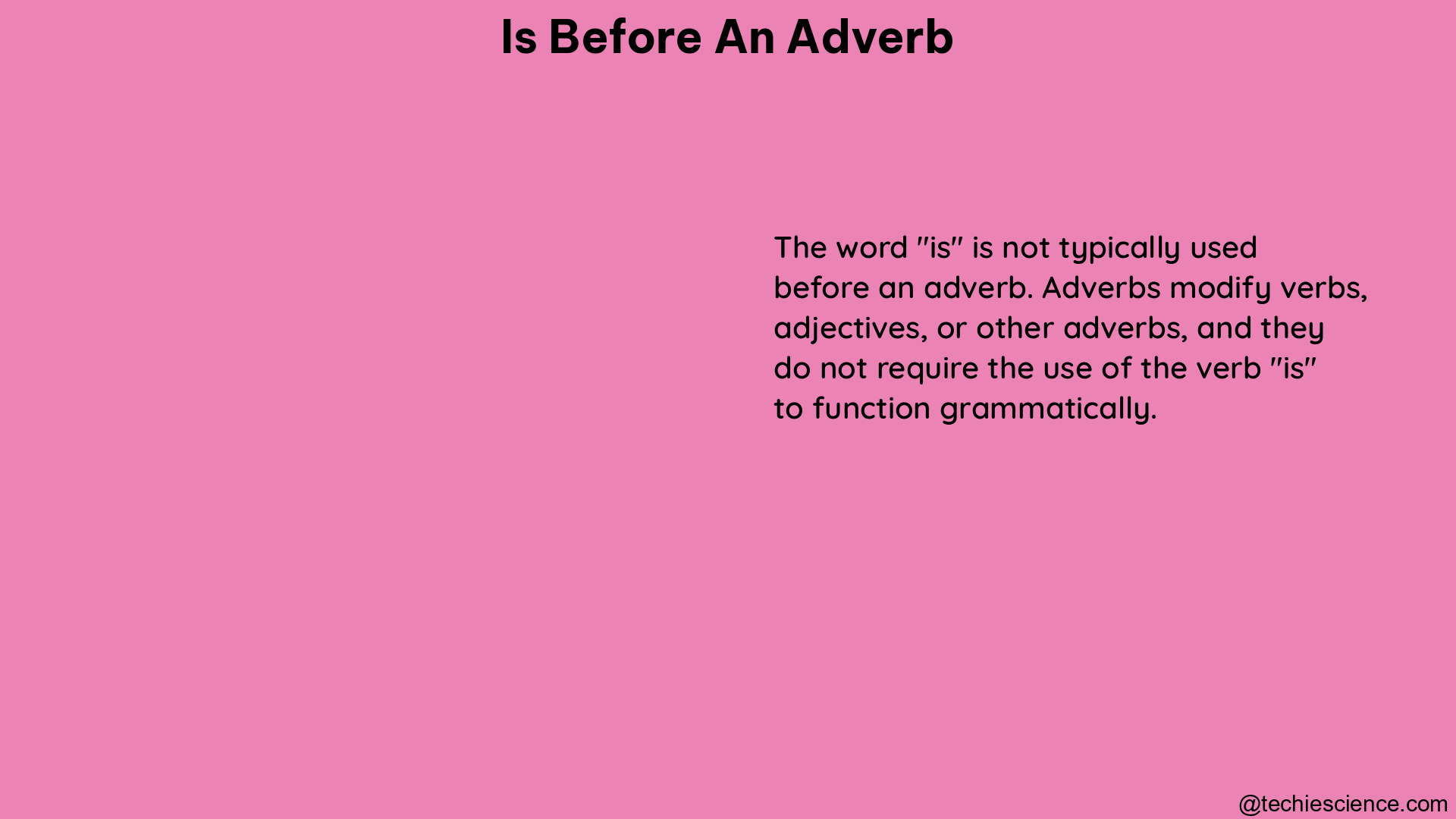The word “before” is a versatile English language term that can function as an adverb, preposition, and conjunction. While its primary roles are as a preposition and conjunction, “before” can also serve as an adverb to indicate the timing of an action. This comprehensive guide will delve into the nuances of using “before” as an adverb, providing a detailed exploration of its grammatical functions, usage examples, and key points to help you master this essential aspect of the English language.
Adverbial Function of “Before”
As an adverb, “before” typically indicates that an action occurred at an earlier time. It is used to describe the timing of an action relative to another event or point in time. This adverbial usage of “before” helps to establish a temporal relationship between two occurrences.
Timing Adverb
When used as an adverb, “before” can specify the timing of an action in relation to another event or a specific time. It helps to convey the sequence or order of events, highlighting that one action happened earlier than another.
Example:
– “I finished my work before 5 pm.” In this sentence, “before” is used as an adverb to indicate that the action of finishing work occurred earlier than the specific time of 5 pm.
Relative Timing
The adverbial use of “before” can also describe the timing of an action in relation to another event, without referencing a specific time. This helps to establish a temporal sequence between two actions or occurrences.
Example:
– “I had already eaten before my friend arrived.” Here, “before” is used as an adverb to convey that the action of eating happened earlier than the arrival of the friend.
Frequency Adverb
In some cases, “before” can be used as an adverb to indicate the frequency or repetition of an action. This usage suggests that the action has occurred on previous occasions.
Example:
– “I have been to this restaurant before.” In this sentence, “before” is used as an adverb to convey that the speaker has visited the restaurant on a previous occasion or multiple times.
Prepositional Function of “Before”

In addition to its adverbial use, “before” can also function as a preposition. As a preposition, “before” is used to indicate a spatial or temporal relationship between two entities.
Spatial Preposition
When used as a preposition, “before” can denote a spatial relationship, meaning “in front of” or “in the presence of.”
Example:
– “He stood before the fire.” In this sentence, “before” is used as a preposition to indicate the spatial positioning of the person in relation to the fire, meaning “in front of” the fire.
Temporal Preposition
As a preposition, “before” can also be used to express a temporal relationship, indicating that one event or time precedes another.
Example:
– “He completed the task before Monday.” Here, “before” is used as a preposition to convey that the task was completed earlier than the specific time of Monday.
Conjunctional Function of “Before”
The word “before” can also function as a conjunction, connecting two clauses and indicating that one action must be completed before another can begin.
Sequence Conjunction
When used as a conjunction, “before” helps to establish a sequence of actions, where one event must occur before the other can take place.
Example:
– “I will finish my work before I go to the store.” In this sentence, “before” is used as a conjunction to connect the two clauses, indicating that the action of finishing work must be completed before the action of going to the store can occur.
Temporal Conjunction
As a conjunction, “before” can also be used to express a temporal relationship between two events, highlighting that one action happens earlier than the other.
Example:
– “I will take my medicine before dinner.” Here, “before” is used as a conjunction to connect the two clauses, indicating that the action of taking medicine must happen earlier than the event of having dinner.
Key Points and Examples
To summarize the various functions of “before,” consider the following key points and examples:
- Adverbial Function:
- “I think I’ve met this girl before.” (adverb indicating a previous encounter)
-
“I finished my work before 5 pm.” (adverb indicating timing)
-
Prepositional Function:
- “He stood before the fire.” (preposition indicating spatial relationship)
-
“He completed the task before Monday.” (preposition indicating temporal relationship)
-
Conjunctional Function:
- “I will finish my work before I go to the store.” (conjunction indicating sequence of actions)
- “I will take my medicine before dinner.” (conjunction indicating temporal relationship)
Conclusion
The word “before” is a versatile and essential part of the English language, serving as an adverb, preposition, and conjunction. Understanding the nuances of its usage is crucial for effective communication and mastering the English language. By exploring the adverbial, prepositional, and conjunctional functions of “before,” you can enhance your understanding of this multifaceted word and apply it with confidence in your written and spoken expression.
References
- https://ell.stackexchange.com/questions/299774/before-as-an-adverb
- https://promova.com/what-part-of-speech/before
- https://langeek.co/en/grammar/course/910/before
- https://www.merriam-webster.com/dictionary/before
- https://www.oxfordlearnersdictionaries.com/us/definition/english/before_3
Hi… I am Sowndharya Jagadeeswaran, a university rank holder in M.A. English Literature. I have also done my master’s in Business Administration. Inquisitive as I am, my interest in action-oriented research helped me publish research papers in reputed journals. Now, as a career, I am an instructor where I teach young and adorable students the intricate technicalities of Public Speaking and Creative Writing. I also enjoy writing articles on topics I specialize and research in.
You can connect with me through LinkedIn.-